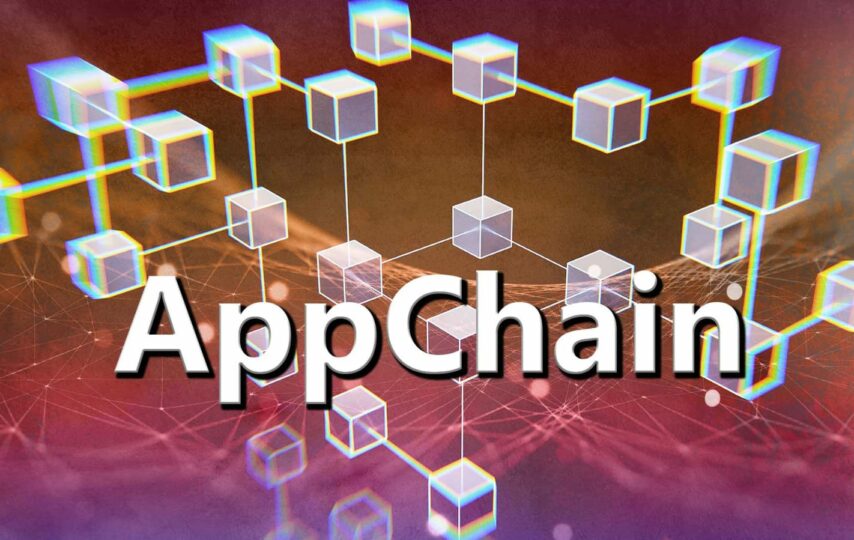The decentralized ecosystem may explore new opportunities due to recent improvements in Web3 AppChains and interoperability solutions across multiple blockchains, even if the number of blockchain networks and decentralized apps (dApps) is growing.
Owing to these advancements, users may experience improved scalability and security while confidently engaging with any blockchain network or decentralized application (dApp), regardless of the token they hold.
What are appchains?
Appchains are application-specific chains that focus on one particular application or sector rather than having general-purpose use cases. They are designed to offer developers a platform with improved security features, easier scalability, and lower gas. The blockchain network upon which they are constructed enables the creation of censorship-resistant, secure, and unchangeable apps.
How do appchains work?
Appchains could be of two types.
- Standalone blockchains built using Cosmos SDK/Substrate, sovereign rollups
- Blockchains that are tied to existing L1 chains. Like Polkadot Parachains, Avalanche Subnets, smart contract rollups etc
So, if it’s a standalone chain, you have the complete flexibility to design it. Be it validator choice, KYC requirements, tokenomics design, having native token, choosing your own VM and everything. For Cosmos SDK and Substrate, you have many open-source modules for every element. Developers can plug-and-play with those modules and also design their own for custom requirements. For sovereign rollups, you can execute transactions on your own rollup, use the same as DA while outsourcing sequencer services. Polygon CDK, zkStack and a couple of other SDKs are there that give you the flexibility to launch your sovereign rollup chain. This essentially offers a rollups infrastructure as a service model making the establishment and management of sovereign rollup chains more accessible and adaptable to individual needs.
If you prefer to leverage the liquidity and security of an fairly decentralized blockchain, and at the same time want to customize some of the things, option 2 is for you. For example, as a Polkadot parachain and Avalanche Subnet you are tied to their established networks and have the flexibility to customize your KYC requirements, launch privately or in public, have your own native token and even have your own validators as well. For smart contract rollups, that validator option you don’t have. But you can choose your sequencers. OP Stack, Arbitrum Orbit, Polygon CDK, zkStack gives you the option to launch your own smart contract rollups with all modularity.
Understanding Interoperability in AppChains:
Interoperability denotes the capability of diverse blockchain networks to engage, communicate, and exchange data or assets seamlessly. In blockchain technology, each blockchain typically operates independently, maintaining its ledger and executing smart contracts or transactions within its network. Cross-chain functionality aims to overcome the isolation of these individual blockchains, allowing them to interoperate.
Interoperability across different blockchain solutions and appchains
Interoperability across different blockchain solutions and appchains is a complex challenge, and various projects and protocols aim to address this issue. Here’s a brief overview of how interoperability is enabled in some of these appchain solutions:
Cosmos SDK:
- Inter-Blockchain Communication (IBC): Cosmos SDK introduced IBC as a standard protocol for enabling interoperability between independent blockchains. IBC allows the transfer of assets and data between different blockchains within the Cosmos ecosystem.
Substrate:
- Cross-Chain Message Passing (XCMP): Substrate facilitates interoperability through XCMP, which enables communication between parachains (parallel chains) in the Polkadot network. Parachains in the Polkadot ecosystem can exchange messages and value using the Relay Chain.
OP Stack/Arbitrum Orbit/Polygon CDK, zkStack:
- Layer 2 Solutions: Solutions like Arbitrum, Polygon, and zkStack primarily focus on Layer 2 scaling solutions rather than cross-chain interoperability. They aim to enhance scalability and reduce transaction costs by conducting most transactions off-chain or through sidechains.
Avalanche Subnets:
- Subnets: Avalanche supports the creation of subnets, which are customizable and interoperable blockchains within the Avalanche network. These subnets can have their own consensus mechanisms, virtual machines, and token standards. Communication between subnets is facilitated by the Avalanche platform.
Conclusion
Achieving interoperability across diverse blockchain solutions and appchains involves a multifaceted landscape of protocols, standards, and innovative approaches. Projects like Cosmos SDK leverage the Inter-Blockchain Communication (IBC) protocol, enabling seamless asset and data transfer within their ecosystem. Substrate employs Cross-Chain Message Passing (XCMP) to facilitate communication between parachains in the Polkadot network. Platforms such as Avalanche leverage subnets, allowing the creation of customizable and interoperable blockchains within their network.







